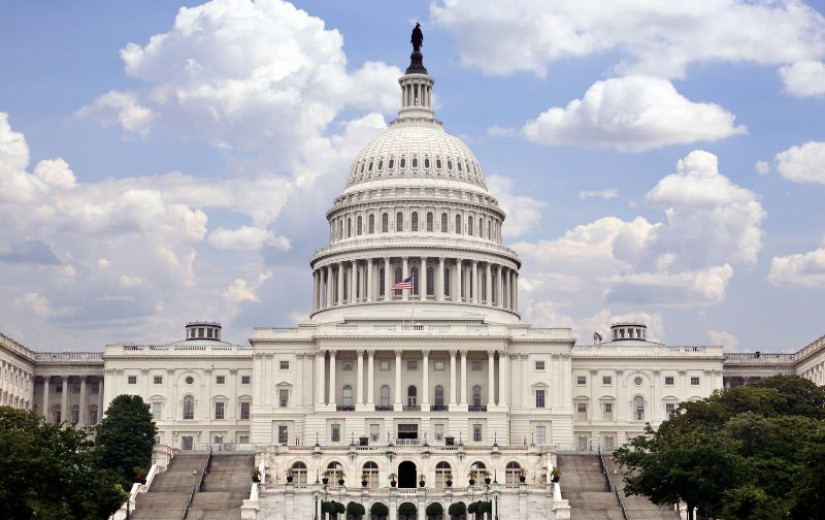
This homebuilder made a fortune catering to the middle and upper middle class. But as those consumers cut back on spending amid economic turmoil, Pat Neal has a new plan to emerge stronger.
Pat Neal describes himself as a seagull. “I have the right to swoop down on any chicken bone,” says the former Florida state legislator and founder of Sarasota-based Neal Communities. By that, he means he takes a high-altitude view of his $1 billion (revenue) homebuilder but is quick to fly in if something small catches his eye.
When Forbes spoke with Neal in early April, he’d just jumped off a call about vegetative buffers, insisting his colleagues move a podocarpus plant six inches closer to the street. “Very few issues are too small for us to rectify in a home or in the environment. We want the wetlands to be pristine, the communities to be lovely all the time, the trash refuse to be nonexistent.”
Guerin Blask for Forbes
Toll Brothers builds mansions for the affluent. D.R. Horton puts up homes for the masses. Neal Communities, meanwhile, targets what Neal calls the “marvelous middle”: middle- and upper-middle-class families spending between $400,000 and just over $1 million (the median sales price in Sarasota is currently $530,000, per Redfin). “Our strategy is to float above the public homebuilders, to build a home of higher quality,” he says.
That means marble surfaces, more landscaping, brick entryways, painted garage floors and cabinets made of solid wood, not pressboard. The company has a “perfection committee” that works on issues like making sure oven, microwave and refrigerator doors can open simultaneously without bumping into each other.
It also means preserving as much of the natural environment as possible. Where other builders are quick to chop down inconveniently-located trees and plant new ones in easier spots, Neal works diligently to keep the originals. Where other builders tuck a sandy creek away into a pipe, Neal designs around it. “Our homes are supposed to look like Florida,” he says. “People live their whole lives with a dream of retiring here. And when they come, we want them to feel like they’ve landed in Florida, with the Florida environment and vegetation.”
This attention to detail and focus on middle- and upper-middle-income customers has been a winning strategy: The privately held business is now one of Southwest Florida’s biggest builders, and Forbes estimates that 76-year-old Neal, who owns 100% along with his two sons, has a net worth of $1.2 billion.
“The quality is exceptional. When he was starting in Sarasota, he opened a new avenue of homes that felt like the mega McMansion, but on an affordable scale,” says Candy Swick, who’s headed a brokerage in Sarasota for 45 years. “He’s built up a good reputation,” adds Florida real estate expert Jack McCabe.
But this year could test him like no other since the Great Recession. The western part of the Sunshine State, where Neal operates, has its highest housing supply in 15 years at the same time that Covid-era inward migration is dropping off. Home values in many areas are projected to decrease 9% or more over the coming year, according to the real estate data platform Reventure. Macro trends don’t look favorable either, with high interest rates reducing demand for houses nationwide and the tariff war threatening to add thousands of dollars to the cost of building materials. Neal’s gross profit margin has dropped from about 30% in 2023 to 24% today. He’s had to slash prices by 10% to 11% over the past 12 months through concessions like free amenities and mortgage subsidies.
“We have a bad combination that’s going to be hard for homebuilding for a few years,” he admits. “We plan to make less money over the short term.”
To prepare, Neal’s pivoting away from a key part of the business model that made him a billionaire. Instead of focusing on the middle of the market—historically about 80% of his sales—he’s gambling on a “barbell-shaped strategy,” going after folks at both the higher and lower ends. “Middle-class people in the last few years have not prospered as they previously did,” Neal says. “I’m moving to the edges for the present, hoping that the marvelous middle recovers over the course of time.”
Neal himself grew up in middle-class America, born in 1949 in Des Moines, Iowa and raised as the youngest of two brothers by his mother (his dad left in 1956 and moved around the country working as land buyer for a Holiday Inn franchisee; his parents divorced in 1959). Neal took to business at a young age with both traditional gigs like lawn mowing as well as craftier pursuits like bottling and selling detergent. He started a company called Youth Power, for which he recruited seven local kids to perform services like cleaning attics, hauling trash bins and moving furnaces. Customers paid $1.25 per hour; Neal paid the youths $0.85. At age 16, he earned about $5,800—more than his mother made as a schoolteacher.
His ADHD was evident at a young age (excerpts from his first grade report card: “too hurried”; “is a good thinker”; “just does not pay good attention”). He says his mom had to attend many parent-teacher conferences. “I have always been a person of very great and substantial energy, bordering on driving other people crazy,” says Neal, “which I’ve thought was a huge benefit in life, because I have always been busy doing something.”
He enrolled at the University of Pennsylvania’s business school in 1967, a couple of years behind Donald Trump. (He saw the future president around campus but didn’t interact with him.) Penn is where he started getting involved with politics, beginning with future U.S. Senator Arlen Specter’s unsuccessful campaign for mayor of Philadelphia and then successful reelection as district attorney, for which he was Specter’s driver and body man. He also worked on Richard Nixon’s presidential campaign and spent two summers in the Army reserves to avoid getting drafted into the Vietnam War.
In 1970, during a multi-year break from school that began when classes were cancelled following the Kent State shooting, he started building homes with his dad. Neal’s father had retired to Florida but was itching to start working again, so he purchased a plot of land at a fishing lodge on Whitney Beach near Sarasota. Neal helped him develop it into a small neighborhood, doing some of the physical labor—like pouring concrete and building sea walls—and investing $20,000 of his own money into the project (he made $93,000 when they closed on the homes around late 1972). His dad handed over the company reins within a few years and went back into retirement. “Once he set me off, I was a perpetual motion machine,” says Neal.
The threat of tariffs could increase his average house cost by over $10,000, but Neal says he won’t pass it on to his customers.
Meanwhile, Neal remained interested in politics. In 1972, amid the Watergate scandal, he decided that associating with the Republican Party had become a liability and switched parties. He ran for the Florida House of Representatives as a conservative Democrat two years later and won. At the same time, the father of his future wife Charlene ran unsuccessfully as a Republican for a state senate seat. A reporter suggested to Charlene that she and Neal could make a good couple, so she decided to do some research: She showed up at one of his speeches with a telephoto lens. “She checked me out to see if I was suitable for a date,” cracks Neal. “It wasn’t a blind date; it was a one-eyed date.” The pair met, married and immediately began working together in the homebuilding business.
Neal followed up his two years in the lower house with four terms in the Florida Senate. In 1986, he lost his sixth election to a Republican as the region shifted red. Neal changed parties a second time and considered running again, but ultimately decided to focus on his business.
Perhaps his biggest accomplishment was co-authoring the state’s first wetlands legislation in 1984—a law that he’s now using as a homebuilder. Neal, who says he’s always been an environmentalist, put in a provision mandating that developers who destroy a wetland habitat must create an enhanced habitat (larger or more diverse) somewhere in the same watershed.
He’s still involved in politics, donating to the GOP, serving on the transition teams for Governor Ron DeSantis and his predecessor Rick Scott, and sitting on the board of Florida Tax Watch, a non-partisan government watchdog. (He says he’s “not a big supporter of President Trump.”) Neal also uses his political acumen and connections to advocate for roads and other infrastructure investments that benefit his homebuilding communities, like Manatee County’s Fort Hamer Bridge, which was finished in 2017.
Last year, Neal Communities built its 25,000th home. Revenues jumped from $613 million in 2022 to $905 million in 2023, when it completed the bulk of its Covid-era home contracts; sales hit $1 billion in 2024 as growth slowed.
Buyers have come to love Neal’s higher-quality-for-less builds. And he has been able to make it work in part by constructing homes that are a bit smaller for their price point—roughly 2,300 square feet on average for the “marvelous middle” homes—while many luxury-oriented builders have focused on building bigger homes to keep their margins high. Neal also buys and develops his own lots, whereas public builders increasingly rely on third parties to do so, and offers things like mortgages, swimming pools and title insurance himself. He even sells furniture through his wife Charlene’s interior design subsidiary.
True to the familial spirit in which Neal and his father cofounded the company 55 years ago, Neal has now brought six other relatives into the business. Besides Charlene, who formally leads design (though he calls her “senior vice president of everything”), his sons John and Michael run subsidiaries focused on developing high-end, master-planned communities and low-end lots, respectively. A niece and a nephew are mid-level employees. His granddaughter will soon start as a summer intern.
“My view is that ‘the Trump adjustment’ will result in a decline in building activity and the reduction of interest rates.”
Now the threat of tariffs, Neal says, could increase his average house cost by over $10,000 as well as reduce demand among that targeted middle class, which is already getting squeezed by high prices and interest rates. So he’s buying more land for his high-end brand Neal Signature, where customers have more spending discretion in the face of economic headwinds. And he’s focusing on his new, lower-end brand SimplyDwell, where he can build homes faster and cheaper. The idea for the SimplyDwell concept actually came from his VP of community and governmental affairs, Ivory Matthews, during a late 2022 board meeting.
“She said, ‘Gosh, why don’t we sell homes to young people? We have all these hometown heroes and teachers who can’t buy a home, so why don’t we as a company make a commitment for this?’” remembers Neal. “And I said, ‘I think the financial stars line up. We’re going to have lower interest rates, and this is a great time to do it.’” He launched the brand the following year and is spending $200 million to buy 2,006 lots for its first phase.
The inaugural set of nearly 50 SimplyDwell houses was finished in the fall of 2024; Neal aimed for them to hit the market right when interest rates plummeted. Rates did drop in the fall, but not significantly, so he’s been writing his customers mortgage subsidies to prop up demand.
Because SimplyDwell homes have fewer custom features, they’re cheaper to build—and easier to do on “spec,” i.e. build on speculation to be move-in-ready, rather than making them for specific customers. One advantage of spec construction is that it allows a builder to use economies of scale to streamline processes and cut costs. Neal was already planning to focus more on spec homes before the market soured to align himself with an industry-wide shift towards greater efficiency (public builders—which tend to have more standardized plans and methods—now dominate the market, so private builders are looking for ways to keep up). The trick will be ensuring that his company doesn’t lose the attention to detail and quality that sets it apart. And that he doesn’t get caught owning hundreds of empty new builds with no buyers in sight.
“He’s gone through some difficult times,” says McCabe, the Florida real estate expert, noting that when the Great Recession hit, Neal—like many builders—had a large inventory of spec homes that were suddenly extremely difficult to sell. “Pat’s one of the most optimistic guys you’ll ever meet. I think that he’s lost a lot of money at times because of his optimism,” McCabe adds. “He’s in a delicate position: Once again, he’s caught with a large spec inventory that’s millions and millions of dollars. When things are good, money is flowing, it’s advantageous to have more spec homes available. When things tighten up, then your carrying costs, your interest can really eat you up.”
Neal, who is sitting on around 220 completed spec homes and building 200 more, still thinks the Fed will make steeper cuts in the coming months and that demand for lower-priced houses will soar. Last year about 70% of his homes were spec; this year he plans to make it 80%. After selling about 48 SimplyDwell homes last year, he aims to sell 84 this year and 300 in 2027. “My view is that the—it’s called ‘the Trump adjustment’—will result in a decline in building activity and the reduction of interest rates,” Neal says. “If by this time next year interest rates fall from 7% to 5%, we’ll have a huge score in the moderate-price home, because of what I hope to be a soft landing.”
One competitive advantage in his favor: He specializes in the type of product that Florida home buyers are likely to seek in the coming years. “It’s not like it was two or three years ago, where you could just throw up anything and they’d buy it,” explains Nick Gerli, founder of real estate data platform Reventure. “Now buyers are really discerning. They have lots of options. So if homes aren’t designed well or the construction quality is obviously lacking, that’s going to be a big, big red flag. Qualitative aspects are going to become more important: making sure that homebuilding communities look good.”
Another smart move is his conservative balance sheet management. He has always tried to avoid debt by growing his business slowly and says he’s only 11% leveraged at the moment (debt to enterprise value). For comparison, Toll Brothers is at 23% and Dream Finders, another relatively small Florida builder, 41%. Neal’s lower debt could give him more flexibility to pivot the business again if interest rates don’t drop. One thing he says he won’t do is raise prices, even if tariffs increase his costs: “I’ll simply have to take it out of the margins.”
Despite the tough market, the mood at Neal Communities appears light. Those of its 311 employees who work in the field keep a 7 am to 3 pm schedule, though Neal starts much earlier and works through the evening. The one hobby he allows himself is reading. He’s in the middle of three books right now and has many more scattered about: eight on his bedside table and one on his car floor. He’s working through a variety of philosophy and religion books that has him contemplating his legacy.
“It’s kind of existential: If you’re a home builder, then what you leave behind in the built environment is your creation for your lifetime,” he says. “The communities that we have built are the test of our creation and, you might say, the authenticity of our lives.”
Or, put another way: “A home is tangible,” he continues. “And it remains for a hundred years after its creation. We want to make sure that what we leave behind is authentic and good.”
More From Forbes
ForbesForbes Richest Person In Every State 2025By Forbes Wealth TeamForbesAI Is Making The Internet’s Bot Problem Worse. This $2 Billion Startup Is On The Front LinesBy Rashi ShrivastavaForbes‘Shock And Awe’: How Trump Took Over Washington—And The World—In 100 DaysBy Dan AlexanderForbesGiving Pledge Signers On Why The 15-Year-Old Group Still MattersBy Kerry A. DolanForbesFrom Elon Musk’s Assistant To SpaceX Investor, Meet Elissa ButterfieldBy John Hyatt








